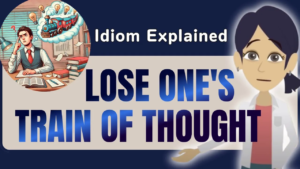Learning English idioms can sometimes feel like deciphering a secret code. When I first encountered the expression “It’s a no brainer,” I mistakenly imagined it had something to do with a mindless creature or a puzzling riddle. In reality, the idiom is used to describe a decision or situation that is so obvious that it hardly requires any thought. This guide will walk you through the meaning, usage, historical background, and practical applications of this popular idiom—all while offering engaging stories and interactive elements to help you integrate it into your everyday conversations.
What Does “It’s a No Brainer” Mean?
At its core, “It’s a no brainer” implies that a particular choice or action is so straightforward that no complex deliberation is necessary. In other words, the answer is self-evident. Whether you are faced with a decision about work, home, or even leisure activities, using this idiom signals that the choice is clear-cut and free from unnecessary complications.
Consider the following key points:
- Clarity: The idiom conveys that the decision is obvious.
- Ease: It emphasizes that little or no mental effort is needed.
- Confidence: Using the phrase suggests that you are comfortable with the decision because the best choice is clear.
This expression is a handy tool for enhancing your communication skills, especially when discussing scenarios where one option overwhelmingly stands out as the best.
Practical Examples of “It’s a No Brainer”
Integrating idioms into your everyday language not only enriches your vocabulary but also adds a touch of personality to your conversations. Here are some practical examples demonstrating how “It’s a no brainer” can be used in various contexts:
- At Work:
Imagine your company offers a promotion that comes with a significant salary increase, improved benefits, and a better work-life balance. In such a scenario, you might say,
“Accepting the promotion was a no brainer.” - Daily Life:
When choosing between a free vacation and staying at a tedious job for another week, the decision is practically forced upon you.
“Taking the free vacation is a no brainer!” - Shopping:
Picture yourself in a store where one brand offers double the quantity at a discounted price compared to its competitors.
“Buying the larger pack is a no brainer.” - Travel Decisions:
Suppose you’re deciding between two travel packages, and one offers an all-inclusive experience at a competitive price.
“Booking that package was a no brainer.”
Each of these examples illustrates how the idiom can clearly express that the choice presented is the best option, requiring little to no deliberation.
An Illustrative Anecdote: Misunderstandings and Clarifications
Sometimes, the literal meaning of an idiom can lead to amusing misunderstandings. Allow me to share a couple of stories that demonstrate how context can change the perception of “It’s a no brainer.”
The Student’s Test Surprise
A friend once recounted the following scenario:
- Scenario: A student aced a test without studying.
- Curiosity: When his classmate asked how he managed such a feat, he replied,
“It’s a no brainer.” - Misunderstanding: His friend misunderstood the remark, thinking it implied that the student was, quite literally, brainless.
- Clarification: In reality, the student meant that the test was so easy that success required no intensive study.
This story perfectly highlights the importance of understanding idiomatic language. Although the literal interpretation may seem odd, the intended meaning is clear when the context is taken into account.
A Dinner Party Dilemma
At a dinner party, I was once asked if I wanted dessert. Without hesitation, I responded,
“It’s a no brainer.”
I intended to express that choosing dessert was an obvious decision given the delightful options available. However, one guest looked perplexed and asked if I was all right, as he misinterpreted my comment to mean that I was short on mental energy. After a good laugh and a brief explanation, everyone appreciated the humor behind the expression. This incident reinforces that idioms often require context to be fully understood and enjoyed.
The Historical Perspective: Where Did “It’s a No Brainer” Come From?
Understanding the origins of an idiom can provide valuable insights into its contemporary usage. The phrase “no brainer” has its roots in American English and first emerged in the mid-20th century. Here are some notable points regarding its history:
- 1950s American Origin:
The earliest documented use of the term appears in American culture, with references dating back to the 1950s. One of the first known examples can be traced to comic strips, where the phrase was used to describe something that was effortlessly achievable. - Documented in Print (1968):
A significant early instance of the idiom appeared in the Lethbridge Herald in January 1968, in the context of a hockey game. A commentator described a particularly easy save by a goalie as “a no brainer.” - Evolution Over Time:
Initially, the term was occasionally applied to describe individuals who appeared to lack intellectual capability. Over time, however, its usage shifted to denote decisions that are simple and require minimal thought.
Note: Although some anecdotes suggest a horse racing context—where even someone unfamiliar with the sport could predict the winner—documented evidence supports its origins in general American usage rather than a specific sporting event.
This historical evolution highlights the dynamic nature of language and how the meanings of expressions can adapt over time to suit new contexts.
Interactive Quiz: Test Your Understanding
Engaging with the material in a fun and interactive way can help solidify your understanding of the idiom. Try answering the following mini-quiz:
- Which of the following scenarios best fits the expression “It’s a no brainer”?
- A. Choosing between two dishes at a restaurant when one is both healthier and less expensive.
- B. Deciding whether to attend a tedious meeting or enjoy a sunny afternoon outdoors.
- C. Picking a new car model when one option offers significantly better fuel efficiency and safety features.
- D. All of the above.
- Reflective Question:
Think about a recent decision you made with minimal hesitation. How would you describe that choice using the idiom “It’s a no brainer”?
Correct Answer:
All of the above. Each scenario presents a decision where one option is clearly superior, requiring little to no thought to arrive at the best choice.
Interactive elements like this quiz not only reinforce your understanding but also encourage you to actively use the idiom in everyday conversation.
Mastering Idioms: Enhancing Communication Through Simple Choices
Learning idioms like “It’s a no brainer” offers several benefits:
- Smart Decision-Making: The phrase succinctly captures the essence of an obvious choice, making it easier to communicate your thoughts in both professional and casual settings.
- Enhanced Fluency: Integrating idioms into your vocabulary makes your language more engaging and natural, allowing you to interact confidently with native speakers.
- Humorous Twist: Idioms often add a playful element to your speech, which can lighten the mood during serious discussions.
Consider these additional practical examples:
- At Work:
When your team is deciding on a cost-effective strategy that promises immediate benefits, you might comment,
“Implementing this approach is a no brainer.” - At Home:
When planning weekend activities, if one option clearly stands out as both fun and relaxing, it’s perfectly acceptable to say,
“Choosing that outing is a no brainer.” - In Social Settings:
Even in casual conversation, expressing a simple decision can spark a lively discussion. For instance, if a friend suggests trying out a new restaurant that everyone loves, you could add,
“Going there is a no brainer.”
By mastering such idioms, you not only boost your vocabulary but also develop a more nuanced understanding of the language—a crucial skill for any dedicated learner.
Final Thoughts
Mastering the idiom “It’s a no brainer” is more than just learning a phrase; it’s about enhancing your overall communication skills. By understanding its meaning, historical context, and practical applications, you are better equipped to express ideas succinctly and confidently. Here are the key takeaways:
- Definition: The idiom signifies that a decision is so obvious that it requires little thought.
- Usage: It can be applied in various scenarios, from professional settings to everyday conversations.
- Historical Context: Originating in American English during the mid-20th century, its meaning has evolved over time.
- Engagement: Interactive elements like quizzes can make the learning process enjoyable and memorable.
By incorporating “It’s a no brainer” into your vocabulary, you will not only communicate more effectively but also add a bit of humor and simplicity to your language. Remember, the beauty of idioms lies in their ability to convey complex ideas in a compact, relatable manner. So next time you are faced with an obvious choice, don’t hesitate to declare, “It’s a no brainer!”
Thank you for taking the time to explore this guide. Feel free to share your own experiences and thoughts in the comments section. Your journey toward mastering English idioms is a smart decision—truly, a no brainer!









Comment